Pancreatic Cancer — Embolization or Chemoembolization: treatment in the Best Hospitals in the World
Treatment prices are regulated by national law of the corresponding countries, but can also include additional hospital coefficients. In order to receive the individual cost calculation, please send us the request and medical records.
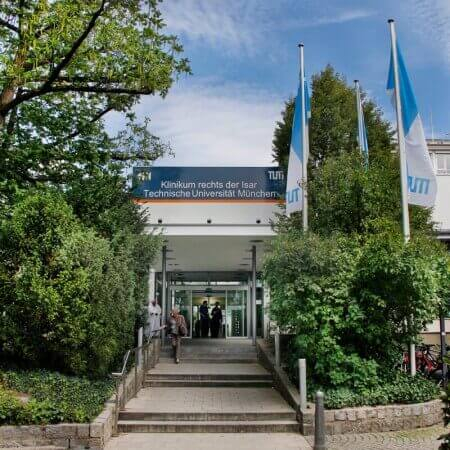
Department of Interventional Radiology
The Department of Interventional Radiology offers the full range of imaging examinations, as well as innovative image-guided minimally invasive techniques for the treatment of tumors, vascular diseases and internal pathologies (for example, CT, MRI, PET-CT, SPECT). The department's doctors have deep knowledge and colossal experience in the field of interventional radiological methods of treatment, which represent an excellent alternative to open surgical interventions. Despite the high level of technical equipment and the presence of advanced computerized systems, the focus is always on the person with his individual needs. Compliance with current clinical protocols and high professionalism of the department's specialists contribute to the successful clinical practice, as well as the reputability of the department among the best medical facilities of this kind in Germany.



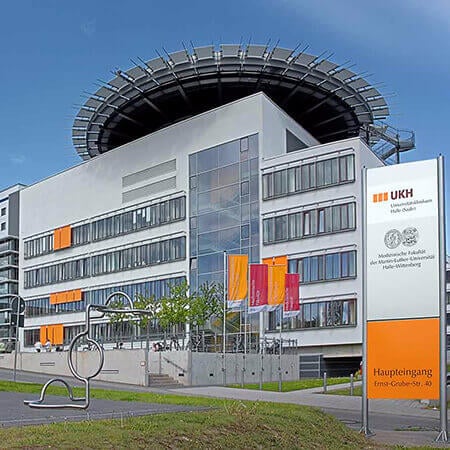
Department of Adult and Pediatric Diagnostic, Interventional Radiology, Neuroradiology
The Department of Adult and Pediatric Diagnostic, Interventional Radiology, Neuroradiology offers the full range of modern radiological diagnostics and minimally invasive treatment both on an inpatient and outpatient basis. It has advanced equipment for conducting radiological studies in adults and children, as well as minimally invasive procedures under the guidance of imaging systems. There is maintained close cooperation with many departments of the hospital, which provides an interdisciplinary approach to treatment and comprehensive medical care.




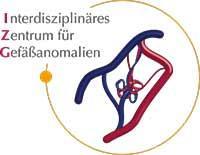

Department of Adult and Pediatric Diagnostic, Interventional Radiology, Neuroradiology
The Department of Adult and Pediatric Diagnostic, Interventional Radiology, Neuroradiology is one of the best institutions of its kind in Germany and offers patients the full range of radiological studies and imaging-guided minimally invasive therapy. The department’s scope of tasks also includes imaging diagnostics in children of all age groups, detection and invasive treatment of cerebral vascular pathology (neuroradiology). Patient care is provided both on an inpatient and outpatient basis.






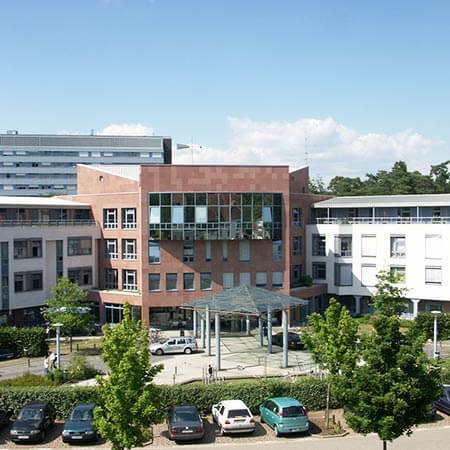
Department of Interventional Neuroradiology
The Department of Interventional Neuroradiology offers the full range of services in the areas of its specialization. The medical facility provides imaging diagnostics and low-traumatic image-guided interventional treatment of nervous system diseases. The department's specialists have rich experience and exceptional professional skills in the field of interventional procedures for acute and chronic vascular diseases, such as ischemic strokes, brain hemorrhages, cerebral artery stenosis, brain aneurysms, and vascular malformations. The department's neuroradiologists cooperate closely with neurologists and neurosurgeons so that each patient receives an optimal treatment regimen based on the expert opinions of the specialists. The department's medical team has state-of-the-art computed tomography (CT), magnetic resonance imaging (MRI), and MR angiography systems that are actively used for diagnosing patients and therapeutic procedures. Medical care is provided in compliance with current clinical protocols. The department also offers many outpatient medical services, which is an advantage for many patients.



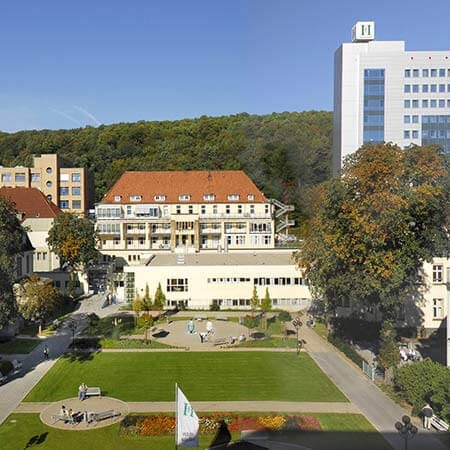
Department of Neuroradiology
The Department of Neuroradiology provides the full range of diagnostic and therapeutic services in the areas of its specialization. The team of the department's doctors deals with the diagnostics and treatment of brain and spinal cord pathologies. The department has at its disposal state-of-the-art medical equipment, including systems for CT, MRI and myelography, thanks to which specialists can comprehensively assess the state of the nervous system, detect pathological processes at the initial stages and provide effective treatment. Among the department's therapeutic options, a special focus is on the interventional treatment of acute stroke – thrombectomy. Another important focus of the specialists' work is the treatment of cerebral vascular malformations, stenosis of the arteries of the brain and spinal cord, and cerebral aneurysms. In addition, the department provides CT-guided interventional pain management to relieve chronic back pain. The department's neuroradiologists cooperate closely with doctors from the related medical specialties: neurologists, neurosurgeons, ophthalmologists, otolaryngologists and radiation therapists. The specialists strive to provide each patient with high quality medical care meeting his needs and wishes.





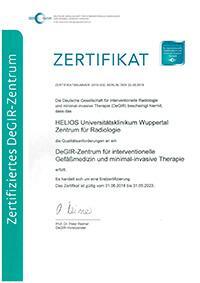
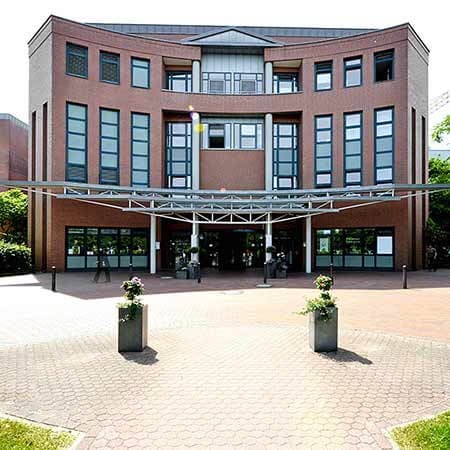
Department of Adult and Pediatric Diagnostic, Interventional Radiology
The Department of Adult and Pediatric Diagnostic, Interventional Radiology offers the full range of services in these medical fields. To ensure the accurate diagnostics and effective treatment, the department has state-of-the-art medical equipment, particularly 64-slice CT scanner, two 1.5 Tesla high-performance MRI devices, modern equipment for digital subtraction angiography (DSA), pulsed fluoroscopy and many other devices. All medical services are carried out in strict accordance with the protocols of professional societies.

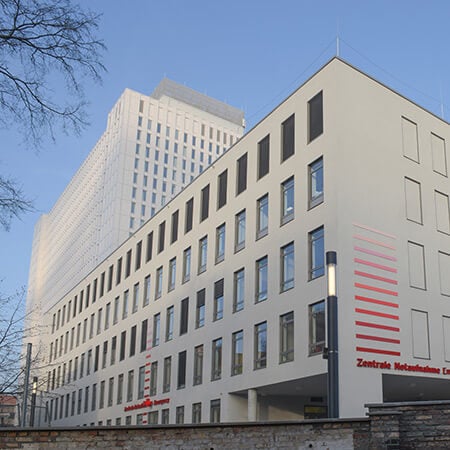
Department of Adult and Pediatric Diagnostic, Interventional Radiology
The Department of Adult and Pediatric Diagnostic, Interventional Radiology offers the full range of medical services in these fields. In order to ensure the most accurate and reliable diagnostics, the department has state-of-the-art systems for CT, MRI, PET, ultrasound and X-ray examinations, as well as PET-CT and SPECT-CT hybrid examinations. The department specializes in interventional radiology, namely, imaging-guided therapy. It performs all vascular (for example, vascular recanalization) and non-vascular imaging-guided interventions (for example, tumor ablation). The department is one of the largest and leading medical facilities of this kind in Europe.


Department of Adult and Pediatric Interventional Radiology, Neuroradiology
The Department of Adult and Pediatric Interventional Radiology, Neuroradiology specializes in modern imaging examinations and minimally traumatic image-guided interventional procedures. Of particular interest to the department's experienced medical team is individualized minimally invasive therapy for cancer and the treatment of pain syndromes and vascular pathologies. The medical facility has state-of-the-art equipment for X-ray scanning, angiography, ultrasound scanning, CT, MRI, and PET/MRI. The diagnostic devices are adapted for children, including newborns. During examinations and treatment, the department's specialists strictly meet radiation protection standards. As for treatment, special attention in clinical practice is paid to interventional procedures for vascular diseases and malignant tumors. These procedures are performed using catheter-based techniques under CT, MRI, or angiography guidance. Despite the low trauma rate of interventional manipulations, their effectiveness is comparable to full-fledged surgery. The medical facility cooperates closely with other departments at the hospital, thus providing comprehensive medical care at the highest level of university medicine. The department's successful clinical practice has been recognized by prestigious quality certificates, including the ClarZert certificate and certificates from the German Cancer Society (DKG) and the German Radiological Society (DRG).





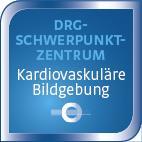
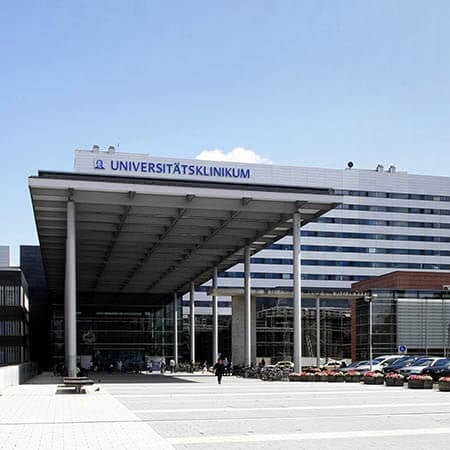
Department of Adult and Pediatric Diagnostic, Interventional Radiology
The Department of Adult and Pediatric Diagnostic, Interventional Radiology provides the full range of services in these fields and specializes in conducting radiologic examinations, high-intensity focused ultrasound (HIFU) therapy, vascular, oncological, orthopedic and urologic interventions. The department includes specialized Sections for Gynecologic, Pediatric and Orthopedic Radiology.





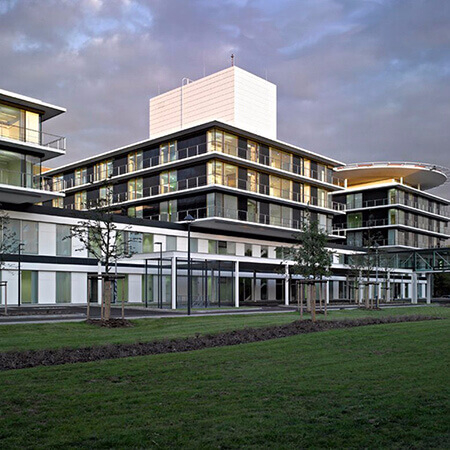
Department of Adult and Pediatric Diagnostic Radiology, Interventional Radiology and Neuroradiology
The Department of Adult and Pediatric Diagnostic Radiology, Interventional Radiology and Neuroradiology offers the full range of modern radiological examinations and minimally invasive imaging-guided treatment of various diseases. Most often, radiologists have to deal with the diagnostics and therapy of tumors, inflammatory processes, injuries, pathologies of the heart and vascular diseases. The combination of advanced medical technologies and high professionalism of the doctors working in the department are the key to the successful treatment results.
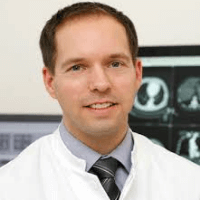



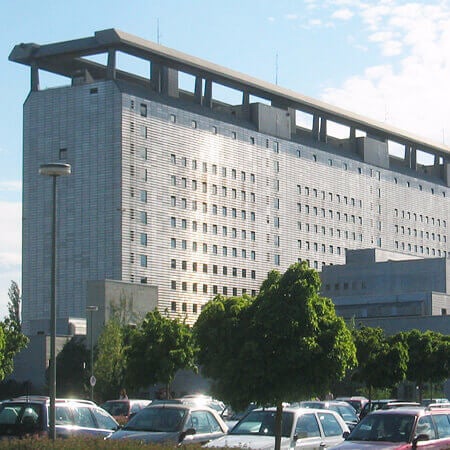
University Hospital of Ludwig Maximilian University of Munich
Department of Adult and Pediatric Interventional Radiology
The Department of Adult and Pediatric Interventional Radiology provides the full range of medical services in the area of its specialization. The department offers modern diagnostic rooms with advanced equipment for imaging examinations for patients with suspected cancer, diseases of the cardiovascular system, thorax, abdominal organs, musculoskeletal system, and breast diseases. The department's diagnostic systems are adapted for examining children of different age groups. The medical facility also offers many therapeutic services, the most popular of which include MRI-guided treatment of uterine fibroids with high-intensity focused ultrasound (HIFU) and uterine artery embolization, prostate adenoma treatment with prostate artery embolization, tumor treatment with brachytherapy, percutaneous radiofrequency ablation, percutaneous microwave ablation, and transarterial chemoembolization. The doctors working at the medical facility also have rich experience in the interventional treatment of vascular pathologies and arteriovenous malformations. The department has an excellent reputation and regularly diagnoses and treats patients not only from Germany but also from other countries in the world.






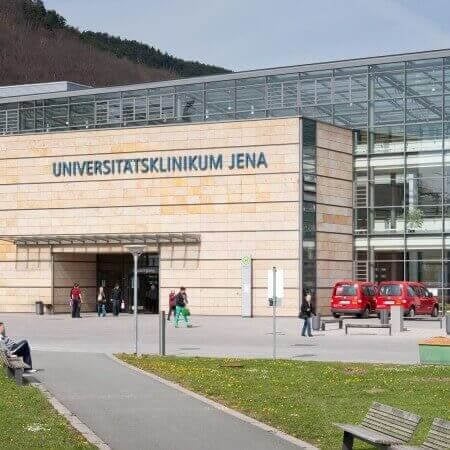
Department of Adult and Pediatric Diagnostic, Interventional Radiology, Neuroradiology
The Department of Adult and Pediatric Diagnostic, Interventional Radiology, Neuroradiology offers the full range of services in these medical fields. Here patients can undergo all modern imaging diagnostic studies and therapeutic procedures, the quality of which corresponds to high international standards. The department also specializes in conducting radiological studies in children and adolescents. The cutting-edge technical equipment and the rich clinical experience of doctors contribute to the successful work of the department.



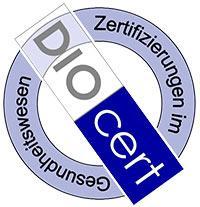
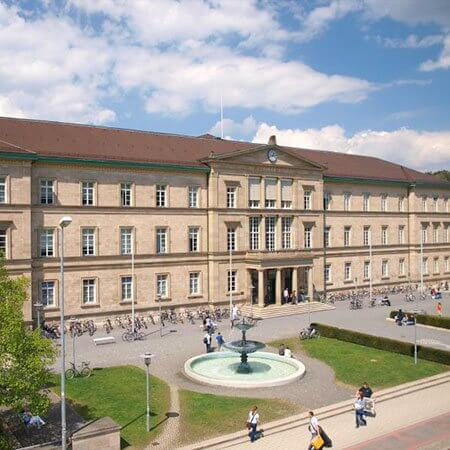
Department of Adult and Pediatric Diagnostic Radiology, Interventional Radiology
The Department of Adult and Pediatric Diagnostic Radiology, Interventional Radiology offers the full range of services in these fields. It conducts all types of modern imaging studies: sonography, digital X-ray, angiography, multilayer computed tomography and conventional MRI, positron emission tomography (PET/CT), etc. The department also specializes in minimally invasive treatment of various tumors, vascular pathology (obstruction and vascular stenosis). The Section of Experimental Radiology is engaged in active research to optimize existing methods and develop new ones.




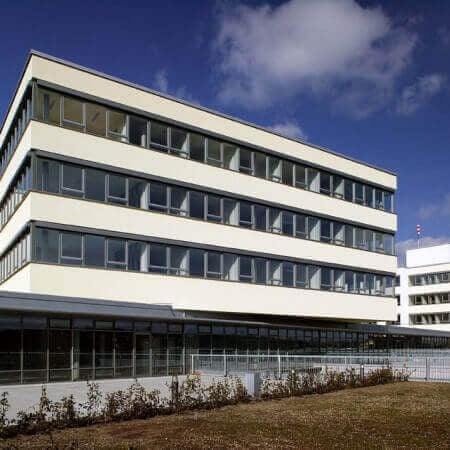
Department of Adult and Pediatric Diagnostic, Interventional Radiology
The Department of Adult and Pediatric Diagnostic, Interventional Radiology offers the full range of modern diagnostic and therapeutic procedures in this field. For this purpose, it has advanced medical equipment: magnetic resonance imaging (MRI), multispiral computed tomography (CT), duplex sonography and digital X-ray, fluoroscopy, etc. In the field of interventional radiology, the focus is on the treatment of vascular diseases, for example, the doctors of the department conduct special measures for dilating the vessels in peripheral arterial occlusive disease and closing the vessels in complicated bleedings. Also, the range of services in this field is complemented by the installation of drainage and port systems, punctures, and special percutaneous methods for tumor treatment.





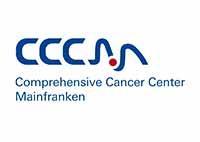
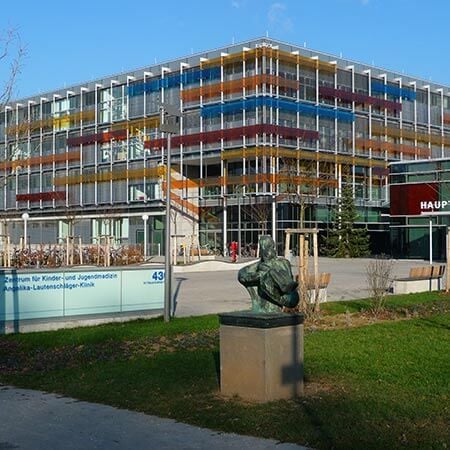
Department of Adult and Pediatric Diagnostic, Interventional Radiology
The Department of Adult and Pediatric Diagnostic, Interventional Radiology offers the full range of services in these medical fields. It conducts all modern radiological examinations and imaging-guided minimally invasive interventions for the treatment of various benign and malignant diseases. A feature of the department is imaging diagnostics in children and adolescents. There are specially adapted devices with minimal irradiation for this purpose.




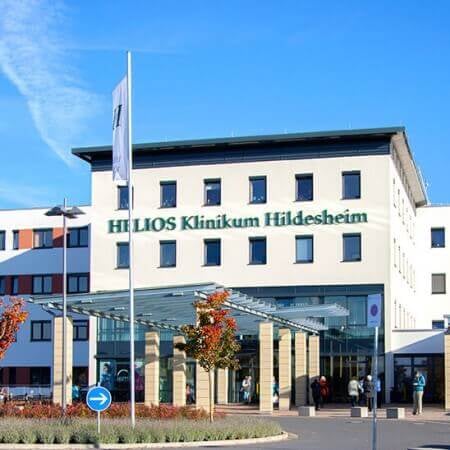
Department of Interventional Radiology
The Department of Interventional Radiology provides the full range of medical services in the area of its specialization. The team of the department's doctors specializes in diagnostic and therapeutic image-guided interventional procedures. The doctors have at their disposal the most advanced imaging devices, including X-ray systems, ultrasound devices, equipment for computed tomography and magnetic resonance imaging. In most cases, the department's specialists perform interventions on the vessels, and therefore doctors from the Department of Vascular Surgery are often involved in the therapeutic process. The use of state-of-the-art equipment allows the patients to get rid of pathological changes in the vessels of any part of the body, excluding open invasive surgery with its high risks. The department's medical staff has excellent qualifications and vast clinical experience, so patients confidently trust their health to real professionals.


Pancreatic cancer is one of the most severe, prognostically unfavorable diseases in oncology. Whenever possible, pathology is treated with surgery. If the cancer is unresectable, chemotherapy and irradiation are used. Innovative treatment methods are used abroad, including chemoembolization of pancreatic arteries. Doctors deprive the tumor of its blood supply, which leads to the death of cancer cells. This procedure is minimally invasive and well tolerated by patients. It relieves symptoms of the disease and increases life expectancy.
Content
- What are embolization and chemoembolization
- When is embolization applied
- How is the treatment carried out?
- TACE results
- Hepatic artery chemoembolization
- Why is it worth undergoing treatment abroad
- Treatment in Europe with Booking Health at an affordable price
What are embolization and chemoembolization
Embolization is a treatment method in oncology, the essence of which is to close the lumen of the vessels supplying the cancer. Due to arterial obstruction, cancer cells do not receive oxygen and die quickly.
Embolization can rarely be used as a stand-alone procedure for pancreatic cancer. It is usually combined with regional chemotherapy. It involves the delivery of chemotherapy drugs directly to the tumor through the arterial bed. The combination of these two treatment methods is called transarterial chemoembolization (TACE).
The second most important treatment option for pancreatic cancer after surgery is chemotherapy, but it is not very effective: only a few patients respond to systemic use of cytostatics. A pancreatic tumor has minimal sensitivity to chemotherapy. The problem could be solved by increasing the dose of drugs, but this would lead to unacceptable toxicity of the treatment.
However, chemotherapy drugs can be delivered directly to the tumor through arteries. In this case, they have minimal systemic effect. At the same time, the concentration of drugs in cancer cells is so high that cancer cells die and the tumor size reduces.
TACE has the following benefits in the treatment of pancreatic cancer:
- Minimal invasion – access is provided through a small incision in the arm or leg.
- Procedure can be performed without general anesthesia.
- Transarterial chemoembolization is minimally toxic, 85% of the side effects of regional chemotherapy are grade 1 toxic reactions.
- TACE can be repeated many times, sometimes up to 5-7 procedures are performed in one patient (treatment is stopped only if 2 procedures are ineffective).
- Minimal hospitalization period, which usually lasts only 3-4 days.
- Good tolerability of treatment – although postembolization syndrome develops after TACE, it is not observed in all patients and can be successfully treated with drugs.
- TACE works well with any other treatment options.
When is embolization applied
Surgical removal of the tumor is considered the best therapy for pancreatic cancer. This is the only way which allows the doctors to cure the disease completely. Nonetheless, in 80% of cases, the tumor is unresectable at the time of diagnosis, since it has reached a large size, penetrated into large vessels or metastases.
Patients with pancreatic cancer who have contraindications for surgery can be treated with other methods, namely radiation therapy, chemotherapy, targeted therapy. One of the options for local control of an unresectable tumor is embolization of the vessels supplying the tumor.
In addition, some hospitals use preoperative and intraoperative chemoembolization of pancreatic arteries. It helps to increase the survival rate of patients, reduces blood loss during surgery, and reduces the risk of recurrence. So far, this approach to treating the disease is not considered standard, but encouraging results after clinical trials have already been obtained, which show that patients after combination therapy using chemoembolization have better survival rates.
Pancreatic cancer often metastasizes to the liver. In this case, embolization of not only the pancreatic arteries, but also the branches of the hepatic artery is possible. The procedure allows reducing the size of metastatic tumors.
At the same time, not all patients are candidates for pancreatic artery chemoembolization. Some people have hypovascular tumors, In other words, these are tumors with poor blood flow. In addition, greater pancreatic arteries may have a non-terminous type of structure – multiple anastomoses with arteries of other organs are detected. In this case, the procedure becomes less effective, since the chemotherapy drug is quickly washed out from the injection area.
How is the treatment carried out?
The treatment method is minimally invasive. The doctor does not have to make an incision in the patient's abdomen. All manipulations are performed inside the blood vessels. Transfemoral access (via the femoral artery) is usually used. Some hospitals use a radial approach – through the radial artery (on the arm).
The doctor inserts a catheter into the pancreatic arteries. The specialist uses a contrast agent to assess blood flow. Then the embolization procedure is performed. It can be performed in different ways, depending on the method of closing the lumen of the arteries.
Oily chemoembolization is most commonly used. Doctors inject lipiodol-based emulsion with chemotherapy. Lipiodol blocks the pancreatic arteries and accumulates in the tumor tissue, staying there for a long time. As a result, the tumor is damaged by two mechanisms: the cessation of blood supply and prolonged exposure to chemotherapy. The effect of oily chemoembolization is temporary. It cannot close the lumen of blood vessels forever. This has both advantages and disadvantages. The main advantage is that the procedure can be performed many times, periodically delivering another dose of chemotherapy drugs to the tumor through the pancreatic arteries.
Drug-saturated microspheres are less commonly used. These are dense particles, which block blood vessels forever. They release chemotherapy drugs longer, affecting the tumor for several weeks.
When performing TACE, doctors strive to close only the target vessels, namely those supplying the tumor. At the same time, it is important to avoid getting the embolization into other arteries supplying blood to neighboring organs and tissues. To avoid complications, European specialists carry out thorough diagnostics to assess the blood flow in the tumor area. They use a technique to redistribute blood flow by closing off non-target vessels with a balloon catheter.
Although chemotherapy drugs are injected into the pancreatic arteries, not all cytostatics penetrate in the tumor tissues. Some of them enter the systemic circulation, causing side effects. To minimize the toxicity of the treatment, European specialists use hemofiltration methods. The blood is passed through a filter, removing toxins from it.
TACE results
The disease cannot be cured with TACE. Only surgery can get rid of pancreatic cancer forever.
However, the procedure helps to increase the life expectancy of patients. It is used in severe cases when the operation cannot be performed due to the advanced stage of the pathology. The median survival rate for inoperable patients is only 3-6 months. Systemic chemotherapy is ineffective for most of them.
With TACE, the median survival rises to 9 months. The one-year survival rate is 40%. Some patients, whose type of blood supply to the pancreas is favorable for chemoembolization, still receive a good response after 4th-5th procedure. They can survive for several more years after diagnosis.
Even better results can be achieved if chemoembolization is combined with other treatment methods for pancreatic cancer: radiation therapy, targeted therapy, immunotherapy. Some hospitals use radioembolization – closure of the lumen of the pancreatic arteries using microspheres with radioactive material. Proton therapy is available in Europe. It is safer than conventional photon irradiation. It allows the doctors to increase the dose of radiation to the tumor and obtain a more stable clinical effect.
It is also worth paying attention to the symptomatic effect. Pancreatic cancer causes severe pain and jaundice. These symptoms are indications for surgical treatment, even if the patient's life expectancy does not increase as a result of the operation. At the same time, the minimally invasive TACE procedure can reduce the size of the tumor and reduce the clinical manifestations of the disease.
The combined treatment of resectable pancreatic cancer, which involves neoadjuvant (before surgery) or intraoperative chemoembolization of the pancreatic arteries, is considered promising. Clinical trials show the advantages of this treatment option over the standard approach. One-year survival rate increases from 70 to 80%, two-year – from 20% to 60%, three-year – from 13% to 43%.
Hepatic artery chemoembolization
Pancreatic cancer often metastasizes to the liver. Hepatic artery chemoembolization is used to control distant metastases.
The liver has a double blood supply: the healthy parenchyma receives 75% of its blood from the portal vein, 25% from the hepatic artery, but metastases of pancreatic cancer are 90% supplied by arterial blood. Therefore, the closure of the lumen of the branches of the hepatic artery has a stronger effect on the tumor than on the healthy liver.
As a rule, the doctors use drug-saturable microspheres for chemoembolization. They block the blood vessels of the liver and release chemotherapy drugs for a long time, thereby reducing the size of metastatic foci by several times.
Why is it worth undergoing treatment abroad
If the level of medicine in your country is low, then the best option to fight pancreatic cancer is to go abroad. This disease can be treated safely for health abroad, using the most advanced treatment methods. The very latest advances in the field of oncology and endovascular surgery are available in the developed European hospitals.
There are several reasons for you to undergo pancreatic artery chemoembolization abroad:
- Vast experience in chemoembolization for pancreatic cancer.
- The procedure can be used for both resectable and unresectable cancers.
- Doctors close the lumen of non-target vessels with a balloon catheter to avoid the embolysate entering them and the development of severe complications.
- Access to the pancreatic arteries is possible through the radial rather than through the femoral artery, which reduces the risk of local complications of the procedure.
- Doctors use hemofiltration (a blood purification procedure) to reduce the systemic side effects of regional chemotherapy.
- Pancreatic artery chemoembolization may be complemented by hepatic artery chemoembolization in the case of metastatic pancreatic cancer.
- In addition to chemoembolization, other treatment options can be used for patients with pancreatic cancer: targeted therapy, immunotherapy, proton therapy, tumor ablation.
Treatment in Europe with Booking Health at an affordable price
To undergo treatment in one of the European hospitals, please use the services of Booking Health. On our website, you can see the cost of treatment in different hospitals, compare prices and book a medical care program at an affordable price. The cost of embolization or chemoembolization for pancreatic cancer is between 24,400 EUR and 41,100 EUR. Transarterial embolization in European hospitals will be easier and faster for you, and the cost of treatment will be lower.
Please leave your request on our website. Our employee will contact you and provide consultation about the treatment in Europe. Booking Health will take care of the organization of your trip. We will provide the following benefits for you:
- We will select a hospital for treatment in Europe, whose doctors specialize in the treatment of pancreatic cancer.
- We will help you overcome the language barrier, establish communication with your attending physician.
- We will reduce the waiting period for the medical care program and book a doctor's appointment on the most suitable dates.
- We will reduce the price. The cost of treatment in German hospitals will be decreased due to the lack of coefficients for foreign patients.
- We will take care of all organizational issues: documents for entering the country, transfer from the airport, hotel, interpreting services, etc.
- We will prepare a medical care program and translate medical records. You do not have to undergo previously performed diagnostic procedures.
- We will provide communication with the hospital after treatment in Europe.
- We will organize additional diagnostic examinations and treatment in European hospitals, if necessary.
- We will buy medicines abroad and forward them to your native country.
- We will help you keep in touch with the hospital and the doctor after treatment in Europe.
You will be treated by the best doctors in the world. The Booking Health specialists will help you reduce the cost of treatment and take care of all organizational issues, and you will only have to focus on restoring your health.
Authors: Dr. Nadezhda Ivanisova, Dr. Sergey Pashchenko